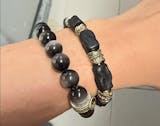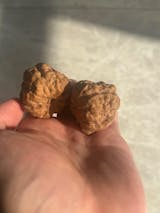How to Interpret the Traditional Chinese Cultural Elements in Ne Zha 2?
Introduction
Ne Zha: Demon Child Conquers the Sea is a film that creatively blends modern animation techniques with traditional Chinese culture, incorporating various specific cultural elements. These elements not only add richness to the movie but also deeply convey ancient Chinese mythology and philosophical ideas. This article will focus on interpreting some of the key cultural elements in the film.

1. Seven-Colored Sacred Lotus: Alchemy of Rebirth
On Screen: Taiyi Zhenren uses this radiant lotus to reconstruct Nezha and Ao Bing’s bodies, its petals pulsating with cosmic energy.
Cultural DNA:
Lotus Symbolism: In Chinese tradition, the lotus represents purity rising from chaos (muddy waters). Buddhists revere it as Buddha’s throne, while Taoists associate it with immortality.
Color Code: The seven colors mirror the Buddhist "Seven Treasures" (gold, silver, lapis lazuli, crystal, agate, red pearl, and coral), symbolizing harmony between heaven, earth, and humanity.
Alchemy Link: Historically, Taoist adepts like Ge Hong documented lotus-based elixirs.
Why It Matters: This isn’t just a plot device—it’s a metaphor for China’s philosophical belief in redemption. Like the phoenix in Western myths, the lotus teaches that destruction precedes renewal.

2. Barrier Beasts: A Modern Interpretation of Cultural Heritage
The design of the Barrier Beast is truly unique, with its short, chubby body, large round head, and bulging round eyes—capturing attention as soon as it appears on screen. Its design is inspired by the golden-faced bronze human head and the bronze "vertical-eye" masks from the Sanxingdui culture.
The Barrier Beast on the left, with its nose-picking pose, is modeled after the golden-faced bronze human head, with ear patterns and golden mask elements perfectly replicating the distinct features of Sanxingdui culture. The green Barrier Beast, wearing a golden mask and guarding Ne Zha, is based on the bronze "vertical-eye" mask. Its side profile resembles the bronze bird-head artifacts unearthed from Sanxingdui, with a nose shaped like an inward-curving bird’s beak or bird-beak pattern, embodying elements of the ancient Shu Kingdom’s bird culture. This design makes the Barrier Beast not only a charming animated character but also a medium for conveying cultural symbols, allowing viewers to experience the charm of ancient Shu civilization while watching the film.

3. Jade Void Palace: A Fusion of Taoist Philosophy and Architectural Aesthetics
In the film, the Jade Void Palace is the residence of the immortals, and its design is inspired by Taoist philosophy's concept of "Heaven and Humanity as One" and the Bagua (Eight Trigrams). The structure of the Jade Void Palace reflects a blend of ancient Chinese architecture and philosophical thought.
3.1 The Eight Trigrams and Taoist Philosophy
The Eight Trigrams are one of the core symbols of Taoist culture, representing the changes and balance of the universe. In the film, the design of the Jade Void Palace follows the structure of the Eight Trigrams, creating a huge energy field that symbolizes the harmony of Heaven, Earth, and Humanity. The symmetry and dynamic nature of the Eight Trigrams embody Taoist philosophy of "non-action", which is about following the natural flow of the universe to reach the highest state of being.
3.2 The Concept of Heaven and Humanity as One
The design of the Jade Void Palace not only reflects architectural aesthetics but also embodies the Taoist concept of "Heaven and Humanity as One." Through this element, the film allows the audience to feel the deep connection between humans and the universe in traditional Chinese culture. As a part of the Heavenly realm, the Jade Void Palace symbolizes the supreme power of divine authority and fate, while also reminding people that only by following the natural laws can harmony and balance be maintained.

Conclusion
Ne Zha: Demon Child Conquers the Sea successfully combines traditional cultural elements with modern animation technology, presenting a mythical story that is both rich in history and contemporary in style. Through these cultural symbols, the film effectively conveys the unique charm of Chinese traditional culture and offers a new interpretation of ancient mythology for contemporary audiences.
Related articles:
Nezha: The Divine Demon Child and His Journey of Self-Discover
Nezha Movie: The Powerful Metaphor and Why It’s a Global Hit


























































